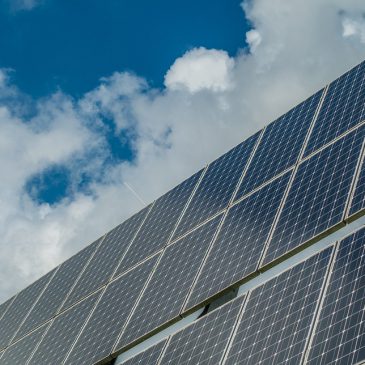Solar Power Generation Plus Storage for a Complete Solution
For many people considering taking the plunge and going solar, examining the staggering array of options available these days may be an early and high hurdle. At first glance, it may seem like solar power should be a relatively simple thing – if you leave out how the solar panels work themselves. You put the panels on your roof, pointed toward the sun. They generate electricity, and your house uses that power to run your lights, your appliances, your television, etc. Roughly speaking, that is certainly how it works.
Going solar will also require all of the necessary modifications to your home’s circuit breaker. There will also be additional equipment needed to convert the power that the cells generate into power that can be used to turn on your appliances, lights, and other electrical things.
But what about when the sun isn’t shining, like at night, or when it’s overcast and your panels aren’t getting enough light from the sun to power all your stuff? What then?
In cases like this, three situations work as solutions. First, you need to be hooked up to the utility grid to supplement power when solar isn’t functioning to optimal capacity. Second, you will need to have some way to store the excess power that your panels generate during peak times for use when the sun isn’t up or out. Last, you can opt for a hybrid version of both: grid access and storage.
What Solar Storage Options Are Available
From afar, solar energy storage is a pretty simple affair. Your panels generate power, and then whatever you don’t use gets stored in your battery or battery bank so it can then be accessed later. It’s actually more complicated than that, but unless you plan to build and install your own system (you would probably need to be a professional electrician or electrical engineer to accomplish), that’s all you really need to know.
Depending on whether you’re living in the hinterlands, without access to a utility grid for backup power, or not, your needs for storage could be simple or very involved. Generally speaking, selecting energy storage options for a rooftop solar power generating system comes down to determining what type and how big a battery or batteries you need.
How Much Storage Do You Need With Solar?
Not all batteries are designed to the same specifications. Some are built for longevity, others are built for efficiency, and others are built for capacity, or their ability to handle power. The four general criteria that batteries are rated for are:
Capacity – The amount of electricity that the battery can store, typically measured in kWh (kilowatt-hours).
Power Rating – The amount of power that the battery can deliver back to your home at one time, typically measured in kW (killowatts).
Depth of Discharge – How much power a battery can deliver back to your home before you need to recharge it (you can’t fully empty the battery), typically measured as a percentage of the battery’s capacity.
Round-Trip Efficiency – How much power the battery can give back as a percentage of the power it took to fill it up. No matter how good a battery is, you’ll never get everything back out of it that your system put in.
Picking the Right Storage for Your Solar System and Power Needs
Generally speaking, getting the maximum quantity of battery storage that your system can use is highly recommended. How much that is depends on your situation (see above regarding living off-grid), the number of panels you will be putting up, and how much power you’ll need during off-peak generation.
It can help a great deal to set up one or more consultations with local solar installers, to get your mind wrapped around what may be the best system for your home.

